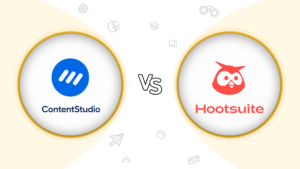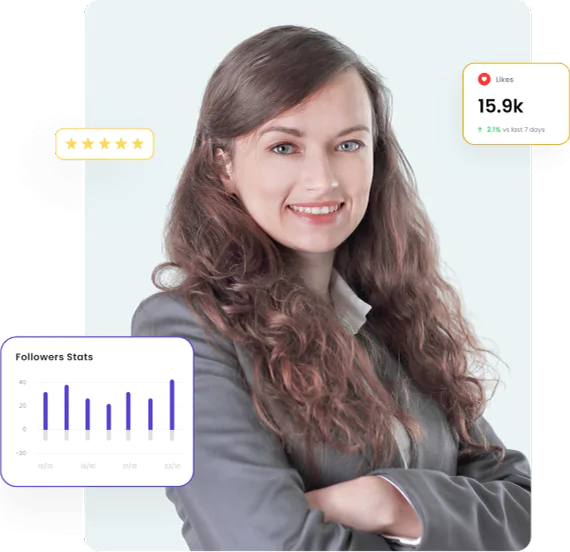Post Planner vs Buffer
Post Planner vs Buffer – Which To Pick in 2025?
Which tool is the best? Is it that hard to decide?
If you're stuck between Post Planner and Buffer, you're not alone. Both offer great features, but the right choice depends on your needs.
No credit card required

Quick Summary: Post Planner and Buffer
When deciding on the perfect social media management tool, certain aspects, such as features, pricing, reviews, and support, must be evaluated.
Here is the overview of tools:
2 months free with annual billing
Post Planner Overview
PostPlanner is designed for marketers who want high engagement with less effort. It helps you skip the content creation struggle with ready-made, high-performing posts and an AI-driven scheduler. While PostPlanner thrives on simplicity and speed, comparing it against Hootsuite’s depth and RecurPost’s automation can help you find your perfect fit.
Users love Post Planner’s ease of use, rich tools like recycling and bulk scheduling, excellent customer support, and great pricing. Few downsides reported beyond minor Excel-import grumbles. [Capterra]
Reviewers describe Post Planner as a straightforward, user-friendly, time-saving tool with reliable scheduling. Some note dated interface design and policy changes as potential drawbacks. [G2]
Buffer Overview
Buffer social is a straightforward social media management tool designed for small businesses, entrepreneurs, and marketers who want an easy way to schedule and manage content. It offers a clean, intuitive dashboard that allows users to schedule posts across multiple social platforms without hassle. Instead of focusing on complex marketing automation, Buffer emphasizes simplicity and efficiency.
Users praise Buffer’s intuitive interface, easy post scheduling, auto-queuing, and seamless multi-platform support. They highlight time-saving workflows but note limitations like lacking multiple queues and preview mismatches. [Capterra]
Reviewers value Buffer’s powerful content calendar, ease of use, smooth social publishing, analytics, and republishing features. Drawbacks include restricted free-plan features (e.g., threaded tweets) and occasional emoji usability issues. [G2]
Rating Comparison
Feature Comparison: Post Planner vs Buffer
Features
Scheduling & Publishing
Queue scheduling with time-slot customization; bulk upload for easy social media management.
Queue-based scheduler with visual calendar for Instagram, TikTok, Threads, and more platforms.
AI-powered scheduler recycles evergreen content, auto-schedules posts, and suggests best times to publish.
Engagement
Basic engagement tools for replying to comments and tracking post interactions on social media.
Unified inbox for replying to comments, messages, and mentions across Instagram and Facebook.
Unified inbox helps reply faster; smart filters prioritize conversations that need attention.
Collaboration
Simple team collaboration with shared content calendars and approval workflows for posts.
Team roles, approval workflows, and shared calendars for smooth content management and planning.
Shared workspaces and approval flows keep teams aligned with role-based access and smart task routing.
Analytics
Track engagement, reach, and content performance with platform-specific metrics and reports.
Track reach, clicks, engagement, and top-performing posts with platform-specific insights.
Smart analytics track engagement, reach, and clicks; white-label reports simplify client performance tracking.
AI Features
AI recommends post ideas, auto-generates hashtags, and suggests the best times to post.
AI Assistant writes captions, suggests hashtags, improves tone, and recommends optimal posting times.
Generates captions, hashtags, bios, and post ideas; predicts performance; automates scheduling and reports.
Pros & Cons: Post Planner and Buffer
Pros
- AI-powered content discovery
- Simplified scheduling
Cons
- Limited advanced analytics
- Fewer integrations
Pros
- Unified dashboard for scheduling
- AI-driven content suggestions
Cons
- Occasional performance lag
- Steeper learning curve
Pricing Comparison
Starter
3 social profiles, 1 User, 12 daily posts
Essentials
1 Social channel, 1 User, Unlimited ideas
Starter
2 social profiles, 10 daily posts, 5 recurring time slots
Growth
12 social profiles, 2 users, 18 daily posts
Team
1 Social channel, Unlimited users, Content approval workflows
Personal
5 social profiles, 20 daily posts, 10 recurring time slots
Business
25 social profiles, 5 users, 24 daily posts
Agency
20 social profiles, 80 daily posts, 40 recurring time slots
Why RecurPost Stands Out
RecurPost wins because it automates what Post Planner and Buffer still make you manage. Many social media scheduling tools struggle with true evergreen recycling, surface-level analytics, manual queues, and pricing plans that get expensive as you scale. RecurPost fixes all of that with powerful, business-friendly features. Its evergreen libraries continuously recycle best-performing posts, keeping your publishing calendar full without copy-pasting. AI-driven scheduling picks optimal times per network to maximize reach, while bulk importing lets you load months of content from CSV, RSS, or spreadsheets in minutes.
When you compare Buffer vs Post Planner, both fall short in advanced automation. RecurPost, on the other hand, provides agency-ready analytics with white-label reporting, so you can share clean performance dashboards with clients. It also integrates across Instagram, Facebook, LinkedIn, X, Pinterest, and Google Business Profiles, giving you one streamlined workflow for every channel.
The payoff: fewer tools, fewer hours, and more consistent results. You save budget with transparent pricing, better than Post Planner and Buffer pricing, and you save time through automation that actually compounds. If you’re exploring tools 2025 and want the best social media engine, RecurPost is the smarter alternative for long-term marketing success.
Why RecurPost is better!
RecurPost isn’t just an alternative to Post Planner and Buffer – it’s a smarter choice for businesses that want more functionality at a lower cost.






